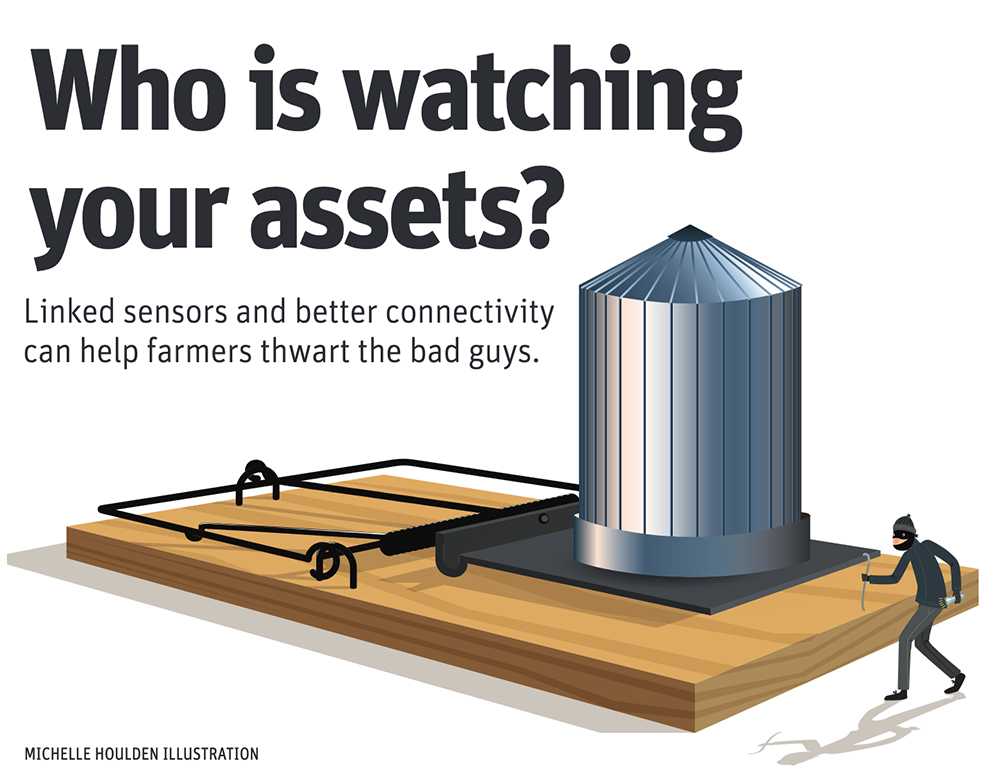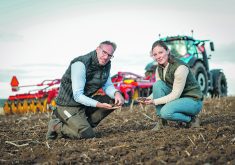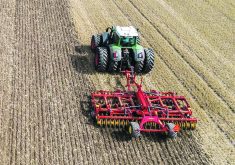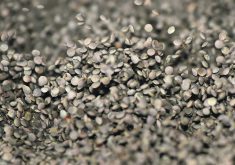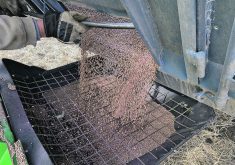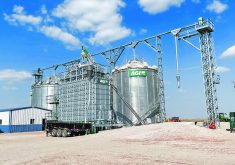Grain theft was rare in the past; in times of wooden bins, aluminum shovels and farmers who wintered at home. That changed with big trucks, big augers, winter vacations and high prices.
One experienced operator with a Super-B truck set-up can drive away with $50,000 worth of canola in a single graveyard shift if he’s lucky.
If he’s unlucky, he might be looking at another kind of graveyard shift because farmers are talking tough this year about protecting their crops. Every bushel of canola that goes missing is like a $20 bill and a toonie disappearing.
Extreme commodity and fertilizer prices turn isolated bins into temptation for criminals.
As well, with farm consolidation, there’s been an increase in remote bin yards, often with no electricity for floodlights. That has created even more temptation for would-be thieves and it’s increased the risk of armed confrontation with farmers trying to protect their property.
Most security experts agree the best defence is an early warning system.
If your sensor system tells you at midnight that an uninvited truck has entered your bin yard or your grazing paddock 10 kilometres away, you have the chance to call the RCMP. You may have a remote-control siren or flood lights at the site to scare away thieves. Or you could get into your truck and approach the site with lights on and horn blowing.
It’s not only cattle and canola that thieves seek. Wheat prices are also attractive and make for a lighter truckload if mud is a concern. Anhydrous ammonia theft is an escalating problem as drug dealers and drug users are discovering NH3 as a shortcut to making their product. Valuable fertilizer and fuel are also tempting targets.
Numerous prairie companies offer many kinds of security devices. Some specialize in sensing, others in real-time digital communication systems to quickly transfer the warning. We’ve picked a few of the most common.
Speed from space
With more than 2,000 low level satellites hovering just above the earth’s atmosphere, Elon Musk’s SpaceX Starlink posted good Canadian performance numbers in the fourth quarter of 2021.
Musk says by year’s end, Starlink will provide service almost to the north and south poles. Why should a farmer care about the North Pole? Because that geographic area includes every prairie farm from the 49th parallel to the Peace River.
Satellite internet providers like HughesNet, Viasat, Starlink and others sell access to people in rural areas who can’t access high-speed broadband. Because they are not tethered to traditional ground infrastructure, they can deliver it to hard-to-service rural and remote locations.
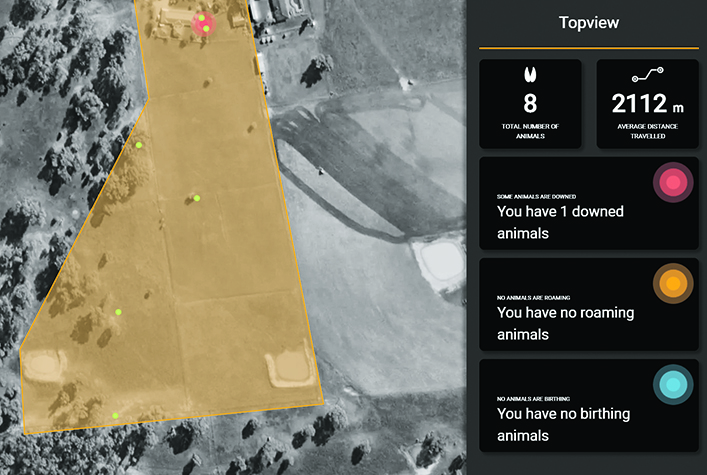
Ookla CTO Luke Deryckx explained that Starlink is the new model for how satellite connectivity works. Many farmers have not been able to benefit from high speed because the available networks are too slow.
“Traditionally, satellite communication depended on an individual satellite way up high in a geosynchronous orbit,” he said in a phone interview from his office in Washington state.
“In order for one individual satellite to maintain contact with Earth, it needs to be pretty far away. What Starlink and a handful of other companies have done is launch thousands of satellites that orbit at a much lower altitude. There are so many of these low-level satellites, they can communicate between each other and back down to the user on Earth.
Satellite broadband performance
According to Ookla, an independent service measuring data transfer performance, Starlink reached a performance milestone in late 2021. The service, based on satellites in low-Earth orbit, is now faster than overall fixed broadband in nearly every province.
» Median download speed achieved 106.64 Mbps
» Median download speed for fixed broadband increased to 96.39 Mbps
» Median upload speed was slower than fixed broadband (12.82 Mbps vs.
21.66 Mbps)
» Latency on Starlink was still much higher (55 ms vs. 11 ms)
» Data as far north as the 56th parallel in Alberta and Saskatchewan
Source: Ookla Speedtest
“The roundtrip time for a signal to travel from earth to a high-altitude satellite and back can be as much as two seconds. Because the distances are so much closer with lower orbit satellites, the time interval is closer to what you’d get with an Earth-based terrestrial broadband. We have service from as far north as the 56th parallel in Alberta and Saskatchewan.”
He said Saskatchewan has a lot of places that lack adequate service and Starlink can fill those.
Deryckx, who grew up on a farm in Washington state, empathised with growers trying to practice precision ag and variable rate without a reliable signal. He said Starlink should all but eliminate that frustrating problem.
The service can be used for any type of data transfer including agriculture, research, advanced on-line education, or game and movies.
“We talk so much about service to precision agriculture, but we tend to overlook farmers’ families. They matter too. Quality of life is no doubt enhanced when populations have unfettered access to high-speed internet.”
According to Ookla Insights, Starlink should be considered a viable option compared to fixed broadband, especially for rural consumers or those without access to fast fixed broadband options like fibre.
What’s in your bin?
BinSense chief executive officer Tanner Folk said his company focuses on systems that sense a problem at storage sites. Data from BinSense detectors feed into existing digital cellular networks.
While the monitoring system is great for its designed purpose of inventory and quality management, Folk said it’s not accurate or quick enough to trigger an alert that an outsider is drawing down grain.
The signal from a BinSense-equipped bin site goes to the central server and then out to the farm site only once an hour, which is time enough for a thief to fill a semi-trailer and leave. The hourly report is sent to the client’s dashboard or the internet.
“We are completely wireless, so it’s no problem if you have some bins out in the middle of nowhere. You don’t need on-site power. Ten years ago, when we started, the cell signals were weaker. But now, the cellular networks do everything we need and more. We’ve never found a problem we can’t overcome with just a little creativity with a booster or a directional cellular.
“But also, the area of coverage is better now. In areas where we previously had good coverage, they’re typically seeing a stronger signal. Where it starts to weaken, with our product and every other company’s product, is where the coverage has a wider spread. It seems there’s a capacity restraint.
“Out in cottage country is where we see the biggest problem. In the spring and fall, and during summer weekdays, farmers get good signals. But on weekends in the summer, people come up to the cottage and start using their cellphones to surf the net and play games. Farmers tell us that’s when they start to lose signal strength.”
Unlike its grain monitoring systems, the BinSense Fuel Lock system is a fast-acting sensory system that alerts the farmer in real-time when someone is tampering with liquid fertilizer or diesel tanks. In the basic system, only 10 people are authorized to take fuel. The eleventh person triggers the alarm.
“It has some built-in security features, so the owner of the asset is always aware of the current state of the fuels. We have tamper-proof sensors on the door, so as soon as it’s opened with a key or a prybar, you get an immediate text message. Any time the fuel is unlocked, you get that unlock notification. There’s also a flowmeter so if fuel is being drawn down, you know it instantly. All this is in real time.”
BinSense uses simple magnetic break sensors, similar in concept to those used in people doors and windows at home. Someone breaking the magnetic field will trigger the alert signal and set off whistles and bells and flashing lights, if that’s how you want it programmed.
Low power, high coverage
SaskTel is taking an aggressive role in improving on-farm security, said spokesperson Greg Jacobs. The system is called Long Range Wide Area Network (LoRaWAN). The system is Low Power, Wide Area protocol designed to use unlicensed spectrum to wirelessly connect battery operated “things” to the internet and Internet of Things (IoT).
“In a nutshell, LoRaWAN is designed to carry small little bits of information a long distance. So, it’s perfect for jobs where you don’t need a high-speed constant connection. You’re communicating relatively basic data,” said Jacobs in a recent phone interview.
“It’s perfect for systems where you have various kinds of security sensors. All they need to do is fire up in a certain scenario and send a simple message to your smartphone or desktop. LoRaWAN does not require the same infrastructure as Starlink or fibre or a 5G tower.
“Everything you can do with LoRaWAN you can do with Starlink. But using Starlink is like swatting a fly with a bazooka. You’re not going to do large volume high-speed data transfer with LoRaWAN. That’s not what it’s designed for. And it’s not what you need in a security system.”
Jacobs said that the LoRaWAN networks have a relatively wide range, depending on local geography. The digital cargo is smaller so the range is longer. If the distance from paddock to home office is too great for a direct signal, then SaskTel sets up repeater stations called gateways. Each gateway is a standalone solar-powered terrestrial tower that receives a signal and immediately re-broadcasts it to the home yard or the next gateway.
He said LoRaWAN will not let a farmer stream his whole farmyard in HD on a 24-7 loop. It’s for simple tasks such as triggering a hidden infrared camera when a sensor on the fuel pump or grain bin triggers an alarm.

If the demands of LoRaWAN are less, then it follows that the costs to buy and operate are also lower, as are the energy requirements.
“That’s a significant benefit of LoRaWAN. Most of the sensors have an extremely long battery life because they’re not constantly on. They only switch on when there’s a need. The batteries last as long as the sensors. When it’s time to replace a sensor, you install it with a new battery.”
Jacobs pointed out that sensors and cameras come from outside suppliers. SaskTel is a provider of communications services, not a developer of on-the-ground security systems. SaskTel is a network company that provides point A to point B communications.
For example, an Australian product called Smart Paddock, monitors grazing cattle in real time.
Each Smart Paddock animal is equipped with a solar-powered ear tag that features GPS tracking, accelerometers and temperature sensors to provide ranchers with precise location data and tracking. The tags monitor biometric anomalies that may indicate a sick or calving cow. The solar-powered ear tag connects to SaskTel’s new LoRaWAN wireless technology.
Jacobs said a big feature is real-time animal location. GPS helps track the herd, helps find lost animals or determines if they’ve wandered into a bog. Most free-range grazing takes place in areas populated by large predators: bears, wolves, cougars and humans. If the herd bunches up into tight pack, they may be doing so for predator protection. It’s time to get out there with the rifle. If a half dozen animals are travelling down a back road at night at 80 km-h, it’s a good bet they’re in a livestock trailer.




